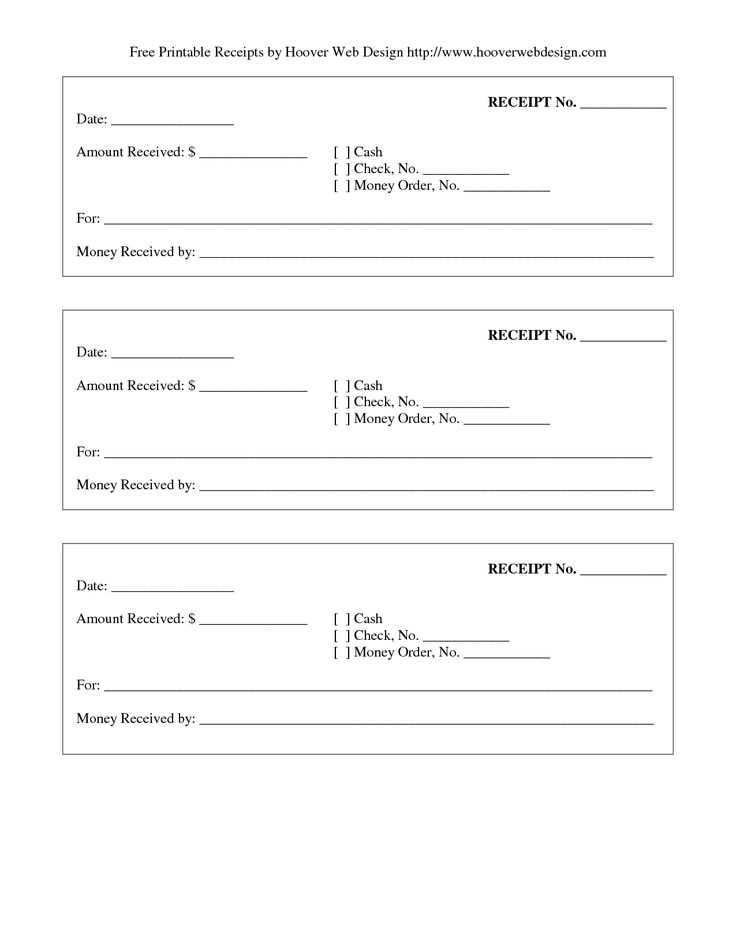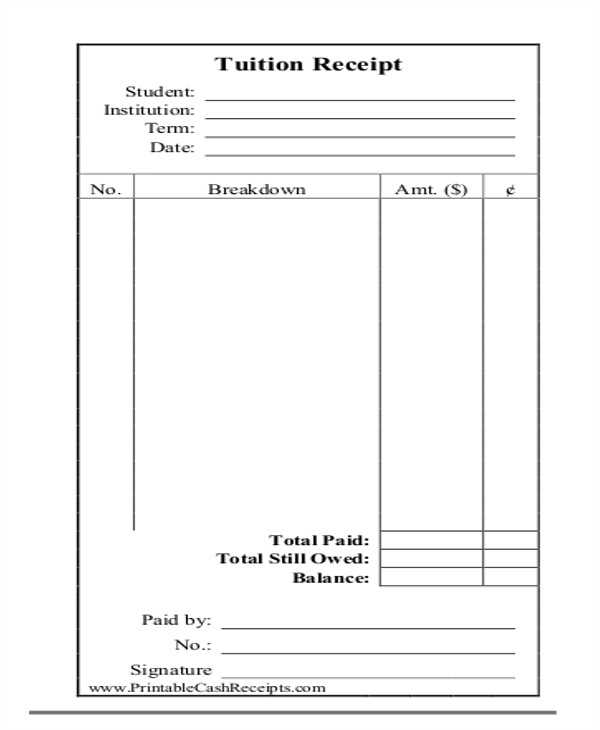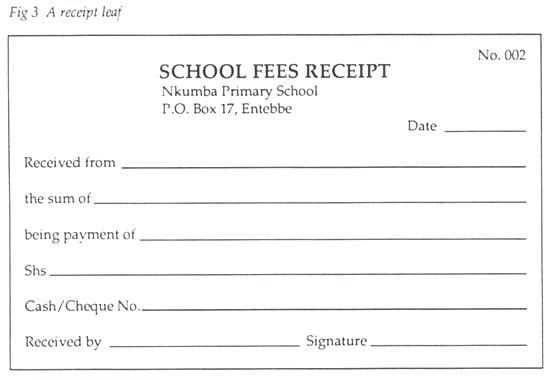
Use a clear and structured format when creating university receipt templates. A professional template should include all necessary details such as the institution’s name, contact information, student details, and specific payment information. Keeping the design simple and organized ensures easy readability for both students and administrative staff.
Include the following elements:
- Institution’s details: Name, address, phone number, and email.
- Receipt number: A unique identifier for each transaction.
- Student information: Full name, student ID, and course details.
- Payment details: Amount paid, method of payment, and payment date.
- Signature: Authorized signature of the finance officer or representative.
By keeping the template consistent and easy to read, you ensure that every receipt accurately reflects the transaction. A well-structured receipt can also help with record-keeping and future inquiries from students or staff.
How to Create a Professional University Receipt
To craft a professional university receipt, follow these clear steps:
1. Include University Information
- University name
- Address and contact details
- Official logo (optional but recommended)
2. Add Transaction Details

- Receipt number
- Date of payment
- Amount paid
- Payment method (credit card, bank transfer, etc.)
3. Specify Payment Purpose
- Tuition fee
- Registration fee
- Other charges (e.g., library fee, accommodation)
Ensure the information is accurate and clearly laid out. The receipt should be easily understandable for both the university and the student.
Key Information to Include in a University Receipt

Include the full name of the student and their university identification number. This ensures clear identification of the payer and helps in matching payments to the correct account.
Detail the date of payment and the payment method used. Whether the payment was made by credit card, bank transfer, or another method, this information provides transparency for both the student and the university.
Clearly state the amount paid and the breakdown of charges. If the receipt covers tuition fees, housing costs, or other services, include individual amounts for each category. This provides clarity about what the payment covers.
Provide a reference number or transaction ID. This unique identifier helps in tracking the payment and can be useful if there are any issues or queries about the transaction.
List the specific academic term or course the payment relates to. This helps avoid any confusion, especially if the student is enrolled in multiple programs or terms.
Make sure to include the university’s contact information. In case the student needs assistance or further clarification, having this information readily available saves time and effort.
End the receipt with an official university seal or signature to authenticate the document. This assures the student that the payment has been processed and is officially recorded by the university.
Best Practices for Formatting University Receipts

Ensure the receipt is clearly structured with distinct sections for each piece of information. Start with the university name and logo at the top for easy identification. Include the date of the transaction, a unique receipt number, and the name of the student or payer. These details should be prominently displayed.
Clear Itemization of Charges
Break down each charge with a description, amount, and applicable tax or fee. This prevents confusion and allows the payer to understand exactly what they are being charged for. Use a table format for clarity, with rows for each charge and columns for the description, quantity, and price.
Payment Method and Total Amount
Always specify the payment method used–whether it’s credit card, bank transfer, or cash. Conclude with the total amount paid, clearly stated, and ensure it matches the sum of individual charges. Avoid unnecessary information that could distract from the key details of the transaction.


